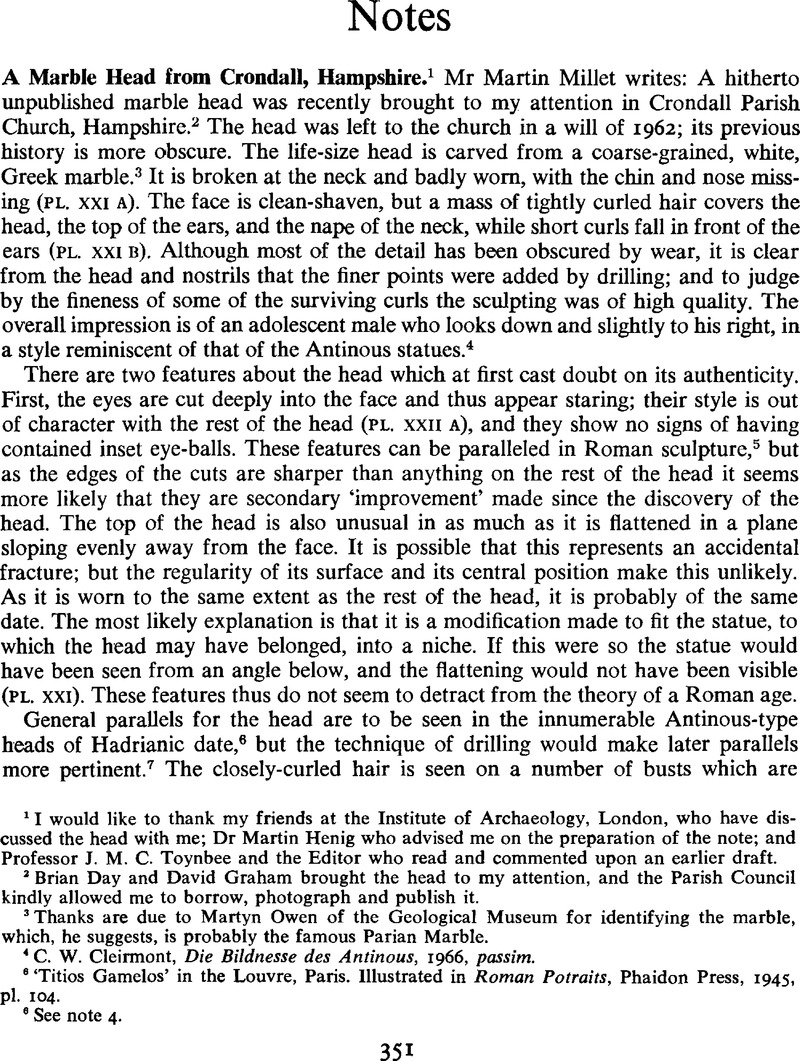No CrossRef data available.
Article contents
A Marble Head from Crondall, Hampshire.1
Published online by Cambridge University Press: 09 November 2011
Abstract

- Type
- Notes
- Information
- Copyright
- Copyright © Mr Martin Millet 1977. Exclusive Licence to Publish: The Society for the Promotion of Roman Studies
References
2 Brian Day and David Graham brought the head to my attention, and the Parish Council kindly allowed me to borrow, photograph and publish it.
3 Thanks are due to Martyn Owen of the Geological Museum for identifying the marble, which, he suggests, is probably the famous Parian Marble.
4 C. W. Cleirmont, Die Bildnesse des Antinous, 1966, passim.
6 ‘Titios Gamelos’ in the Louvre, Paris. Illustrated in Roman Potraits, Phaidon Press, 1945, pl. 104Google Scholar.
6 See note 4.
7 See Hinks, , Greek and Roman Portraiture (London 1935), 30Google Scholar f. for this point.
8 Hinks op. cit (note 7), pls. 39, 40, and 44b for example. A comparable head in Munich is identified as Lucius Verus (Bernoulli, , Römische Iconographie (Stuttgart 1891), Taf. 58)Google Scholar, and another similar one in the Museo Capitalino, Rome, is identified as Marcus Aurelius: Hekler, , Greek and Roman Portraits (London 1912), pl. 265Google Scholar.
9 Jefferson, An account of the Roman Mosaic Pavement Discovered at Barley Pound Farm, Crondall, in Hampshire, 28 May 1817. The original is in Hampshire County Museum; republished in Farnham Museum Society Newsletter Vol. 3, No. 7, 5–8; illustrated in Farnham Museum Society Newsletter Vol. 3, No. 10, 5.
10 Meates, Lullingstone Roman Villa, 1955, pls. 23–9, Chapters 7 and 8.
11 Toynbee, pp. 156–7 in Cunliffe, , Excavations at Fishbourne ii (Leeds 1971)Google Scholar.
12 Lysons, An account of the Roman Antiquities Discovered at Woodchester in the County of Gloucester, 1797, pls. 36–40.
13 British Museum. Guide to the Antiquities of Roman Britain (London 1971), 55, pl. 20Google Scholar.


